Topanga State Park
- January 23, 2024
- 0 comment
Discover the wonders of Topanga State Park, a natural oasis offering stunning landscapes, diverse flora and fauna, and an array of recreational activities right in the heart of Los Angeles. Topanga State Park, located in the majestic Santa Monica Mountains, stands as a natural sanctuary offering a respite from the hustle and bustle of city life. Covering a sprawling 11,000 acres, it is recognized as the world’s largest wildland within the boundaries of a major city. This magnificent park offers a unique blend of rugged terrain, lush landscapes, and breathtaking vistas that overlook the Pacific Ocean. As visitors wander through its extensive network of trails, they are embraced by an array of diverse ecosystems, from dense oak woodlands to open grasslands and live chaparral.
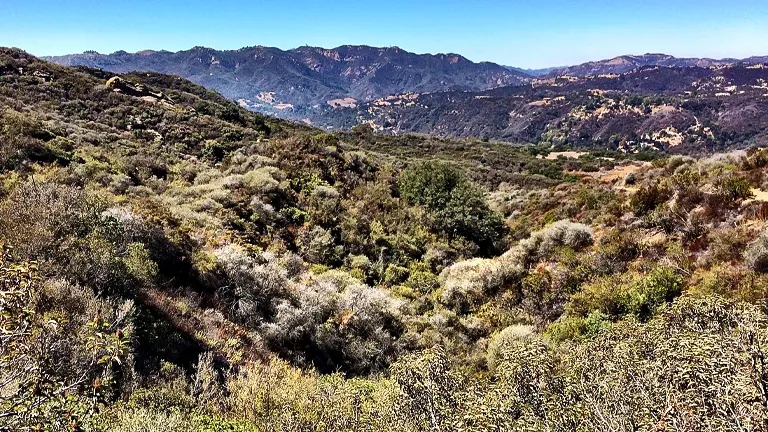
The park’s rich history is rooted in the native Tongva tribe, and its land tells a story of centuries past. Topanga State Park is not just a getaway for nature enthusiasts and hikers; it also serves as a vital habitat for wildlife, including the elusive mountain lion and the majestic red-tailed hawk. With its astounding beauty and serene ambiance, Topanga State Park is a jewel in the crown of California’s state park system, offering a peaceful retreat from the urban hustle and a chance to reconnect with nature’s wonders.
Characterizing Features of Topanga State Park
- Expansive Wilderness within a City: A defining feature of Topanga State Park is its vast expanse, covering 11,000 acres within the city limits of Los Angeles. This makes it not only the largest park in the Santa Monica Mountains but also one of the largest urban parks in the world. Its size is a testament to the city’s commitment to preserving natural landscapes amidst urban development.
- Diverse Trail Network: The park boasts over thirty-six miles of trails and unimproved roads, catering to a wide range of outdoor enthusiasts. These trails offer varying levels of difficulty and provide access to many of the park’s unique features, including panoramic views, geological formations, and secluded natural areas. This extensive network makes it a favorite destination for hikers, mountain bikers, and horseback riders.
- Rich Geological Features: Topanga State Park is renowned for its fascinating geological diversity. The park features sedimentary sandstone rock formations, visible marine fossils, and evidence of volcanic activity. This geological richness not only adds to the scenic beauty of the park but also provides valuable insights into the natural history of the region.
- Proximity to the Pacific Ocean: The park’s boundaries stretch from Topanga Canyon to Pacific Palisades, bringing it close to the Pacific Ocean. This proximity results in stunning ocean vistas from various points within the park, offering visitors a unique combination of mountainous terrain and oceanic views.
- Historical Significance: The area’s history, dating back to the Native American tribes and spanning through Spanish and Mexican rule, to the early American period, is deeply embedded in the park. The Trippet Ranch area, in particular, reflects the park’s past and offers a glimpse into the historical lifestyle of the region.
- Habitat for Diverse Wildlife: Topanga State Park serves as a crucial habitat for a wide array of wildlife. It’s home to over eighty mammal species, numerous reptile and amphibian species, and a variety of bird species, including migratory and resident birds. The park’s diverse ecosystems support this rich biodiversity, making it an important conservation area.
- Educational and Recreational Hub: The park is not only a natural retreat but also serves as an educational and recreational hub. With facilities like the Topanga Nature Center, visitors can learn about the local flora, fauna, and geography. The park’s array of recreational activities, from hiking to wildlife viewing, offers enriching experiences for all ages.
Each of these features contributes to the unique character of Topanga State Park, making it an invaluable asset for both environmental conservation and public enjoyment.
History of Topanga State Park
Topanga State Park, nestled in the Santa Monica Mountains, has a history deeply rooted in Native American heritage, initially inhabited by the Chumash and Tongva tribes. The name “Topanga” itself likely originates from the Shoshonean language, symbolizing its elevated position above Topanga Creek. European influence began with Spanish explorer Juan Rodriguez Cabrillo’s arrival in 1542, and the region later transitioned to Mexican control after 1821. The land, part of the vast Rancho San Vicente y Santa Monica, was primarily used for agriculture and grazing.
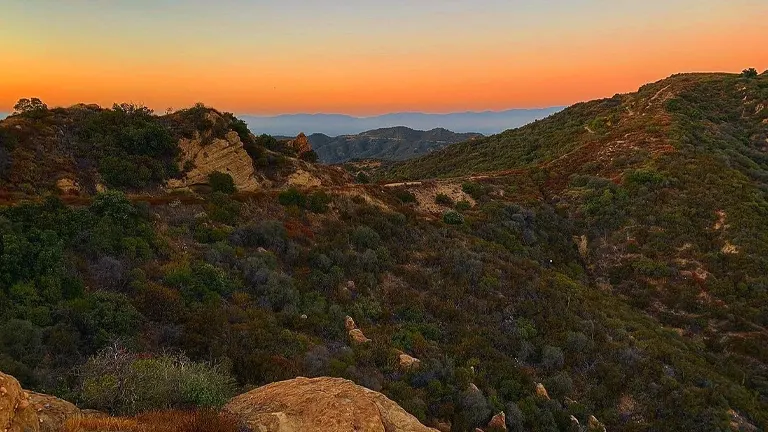
Transitioning into American hands in 1848, the area evolved significantly. The early 20th century saw it transform into a retreat for Los Angeles residents, with Oscar A. Trippet playing a notable role in its development. Recognizing its natural and historical value, the state of California acquired the land in 1964, leading to the official formation of Topanga State Park in 1974. Today, encompassing over 11,000 acres, the park preserves a rich tapestry of cultural and natural history, offering a unique blend of scenic wilderness and historical landmarks within Los Angeles.
The Importance of Conservation and Recreation in Topanga State Park
The importance of Topanga State Park in terms of conservation and recreation is profound and multifaceted. As a vital green space within the urban environment of Los Angeles, the park plays a crucial role in preserving diverse ecosystems and wildlife habitats. It’s home to a variety of plant and animal species, some of which are unique to the California region, making it an essential haven for biodiversity. The park’s extensive wilderness areas, including its oak woodlands, coastal sage scrubs, and chaparral, serve not only as a refuge for wildlife but also as a natural laboratory for environmental research and education.
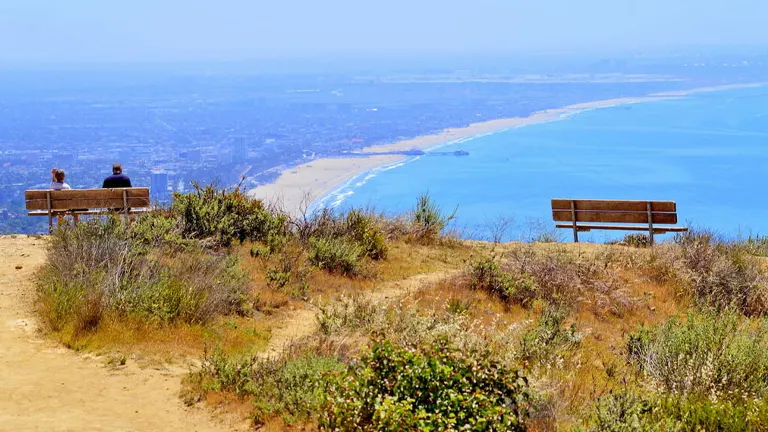
In terms of recreation, Topanga State Park is a cherished destination for residents of Los Angeles and beyond. Its vast network of trails invites enthusiasts of all kinds, from hikers and mountain bikers to equestrians, offering an accessible escape to nature and a chance for physical and mental rejuvenation. The park’s scenic vistas, historical sites, and varied terrain provide a unique backdrop for outdoor activities, contributing significantly to the community’s quality of life. This dual role in conservation and recreation underscores Topanga State Park’s significance as a natural resource, an educational tool, and a source of leisure and wellness within one of the world’s most populous cities.
Unique Location of Topanga State Park
Topanga State Park boasts a unique location that sets it apart as an exceptional natural sanctuary. Situated within the bustling metropolis of Los Angeles, it stands as a remarkable example of untouched wilderness amidst urban sprawl. This 11,000-acre park, nestled in the Santa Monica Mountains, offers a stark contrast to the city’s built environment, providing a serene and picturesque escape just moments away from one of the most densely populated areas in the United States.
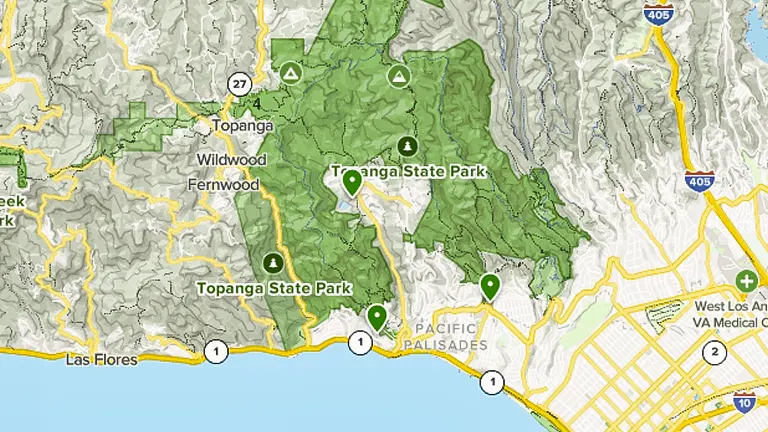
Its boundaries, stretching from Topanga Canyon to Pacific Palisades and Mulholland Drive, position the park uniquely, offering stunning views of the Pacific Ocean on one side and the Los Angeles cityscape on the other. This juxtaposition of natural rugged terrain and urbanity makes Topanga State Park not only a crucial ecological and recreational asset but also a symbolic reminder of the importance of preserving natural spaces within urban settings. The park’s location enhances the accessibility of wilderness experiences to a large and diverse urban population, serving as a vital green lung and a haven for outdoor enthusiasts, nature lovers, and those seeking solace from the city’s hustle and bustle.
Diverse Vegetation and Plant Species in Topanga State Park
- Coastal Sage Scrub (Salvia mellifera, Artemisia californica): This dominant vegetation type, characterized by drought-resistant shrubs like Black Sage and California Sagebrush, thrives in the park’s drier areas. It provides essential habitat for local wildlife, including numerous bird and insect species.
- Montane Chaparral (Ceanothus, Manzanita): Comprising dense, shrubby growth, the chaparral is adapted to the park’s rocky and nutrient-poor soils. Plants like Ceanothus (Wild Lilac) and various Manzanita species flourish here, offering a resilient landscape that rebounds quickly after fires.
- California Oak Woodland (Quercus agrifolia, Quercus lobata): Featuring majestic oaks such as the Coast Live Oak (Quercus agrifolia) and Valley Oak (Quercus lobata), this habitat is vital for many bird and mammal species. These woodlands provide acorns, a crucial food source, and offer shelter and nesting sites.
- Walnut Woodland (Juglans californica): Dominated by the California Walnut (Juglans californica), these woodlands create a unique ecological niche. They support a variety of wildlife and are important for maintaining the park’s biodiversity.
- Riparian Habitats (Platanus racemosa, Salix lasiolepis): Along the park’s streams and creeks, riparian vegetation like the California Sycamore (Platanus racemosa) and Arroyo Willow (Salix lasiolepis) is found. These areas are crucial for wildlife, providing water, food, and shelter.
- Grasslands: The park’s grasslands feature a mix of native and non-native grasses, offering open habitats that are important for species like ground-nesting birds. These areas also play a role in the park’s fire ecology, with grasses serving as both fuel and regenerative agents post-fire.
- Bay Laurel Woodland (Umbellularia californica): The California Bay Laurel (Umbellularia californica) forms dense, evergreen woodlands in some park areas. These woodlands offer a cool, shaded environment and are often found in moist canyons.
- Chaparral and Coastal Scrub: This mixed habitat includes elements of both chaparral and coastal sage scrub, hosting species from both environments and offering a transition zone that increases the park’s ecological diversity.
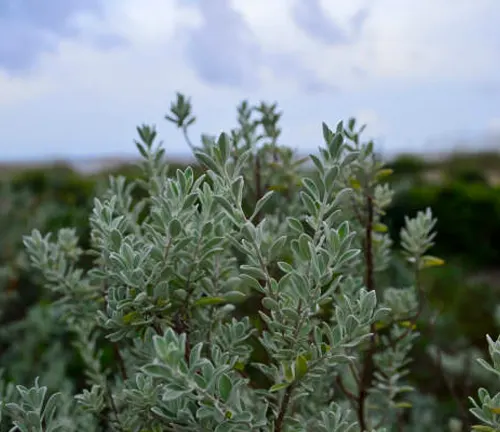
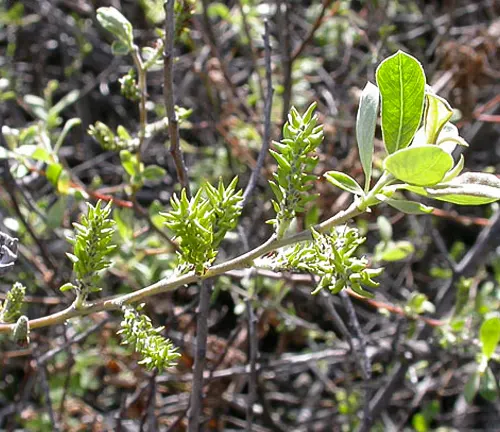
Fauna in Topanga State Park
- Mountain Lion (Puma concolor): One of the park’s apex predators, the mountain lion, also known as a cougar, is a key indicator of ecological health. These elusive big cats require large territories and are rarely seen, but their presence is crucial for maintaining the balance of the ecosystem.
- Red-tailed Hawk (Buteo jamaicensis): This bird of prey is a common sight in the park, soaring high with its distinctive reddish tail. As a predator, it helps control the population of small mammals and rodents, maintaining ecological balance.
- Southern Pacific Rattlesnake (Crotalus oreganus helleri): Often found in the park’s dry, rocky areas, this rattlesnake is an important predator, playing a role in controlling rodent and small mammal populations.
- California Tree Frog (Pseudacris cadaverina): These small, nocturnal frogs are a vital part of the park’s riparian ecosystems. Their presence indicates a healthy aquatic environment, and their vocalizations are a familiar sound in the park’s creeks and wet areas.
- Western Gray Squirrel (Sciurus griseus): Commonly seen in the oak woodlands, these squirrels are important for seed dispersal, especially for oak trees, thus aiding in the regeneration and health of the forest areas.
- California Quail (Callipepla californica): The state bird of California, these quails are often spotted in the scrub and chaparral areas of the park. They play a role in seed dispersal and serve as a food source for larger predators.
- Monarch Butterfly (Danaus plexippus): The presence of monarch butterflies, a migratory species, is significant for the park. They are indicators of a healthy environment, especially regarding the availability of nectar plants.
- Brush Mouse (Peromyscus boylii): A common resident in the chaparral and wooded areas, brush mice are crucial for the ecosystem as a food source for various predators and as seed dispersers.


Attractions in Topanga State Park
Eagle Rock: Eagle Rock is a prominent attraction in Topanga State Park. This unique rock formation provides panoramic views of the surrounding mountains and valleys. Hikers reaching the summit are rewarded with a breathtaking vista, including the Pacific Ocean on clear days.
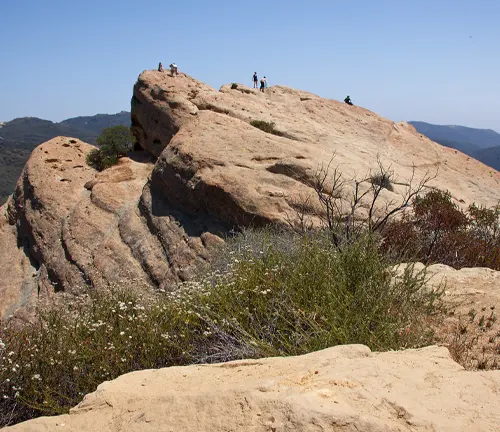

Musch Trail: Musch Trail offers a serene hiking experience through varied landscapes, including oak woodlands and open grasslands. This moderately challenging trail is known for its tranquility and the opportunity to spot local wildlife, making it a favorite among nature photographers.
Topanga Lookout: The Topanga Lookout is an old fire lookout that stands as a testament to the park’s history. Now graffiti-covered, it offers a unique photo opportunity and stunning views of the surrounding area, including the San Fernando Valley.

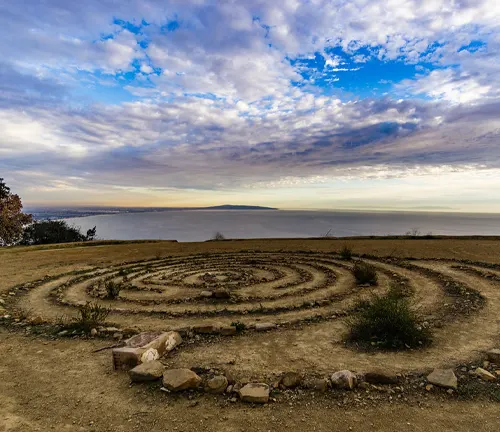
Tuna Canyon Park: Tuna Canyon Park, located within the larger Topanga State Park, is noted for its vast network of trails and exceptional ocean views. It’s a less crowded option for those seeking solitude and unspoiled natural beauty.
Trippet Ranch: Trippet Ranch, once a working ranch, now serves as a gateway to many of the park’s trails. It’s a perfect starting point to explore the park’s rich flora and fauna, and it also features picnic areas and an interpretive center.
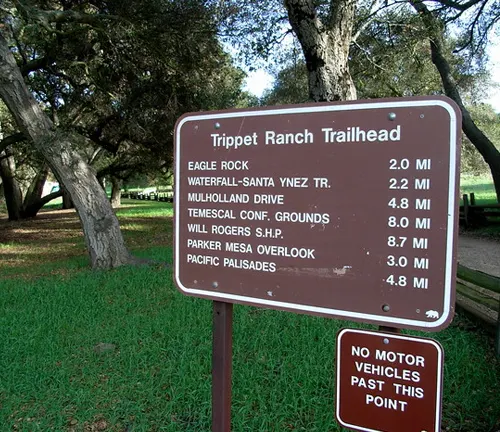

The Backbone Trail: The Backbone Trail traverses through the length of the Santa Monica Mountains and offers hikers a challenging yet rewarding journey. With access points in Topanga State Park, it’s a must-do for avid hikers seeking an immersive experience in Southern California’s natural landscapes.
Recreational Activities in Topanga State Park
- Hiking: The park boasts an extensive network of hiking trails, ranging from easy walks to challenging treks. Popular trails like Eagle Rock and the Musch Trail offer stunning vistas and a chance to immerse in the natural beauty of the area. Whether you’re seeking a leisurely stroll or a rigorous hike, the trails here cater to all levels.
- Mountain Biking: For mountain biking aficionados, Topanga State Park presents a variety of trails with varying levels of difficulty. The terrain offers both challenging climbs and exhilarating descents, making it a sought-after destination for mountain bikers in the region.
- Equestrian Activities: Horseback riding is another beloved activity in the park. With designated equestrian trails and facilities, riders can enjoy the park’s natural splendor from a unique perspective. The park’s trails provide a serene environment for both casual rides and more adventurous journeys.
- Picnicking: Picnic areas are scattered throughout the park, offering families and groups a perfect spot to relax and enjoy a meal amidst nature. With grassy areas and picnic tables available, these spots are ideal for a daytime getaway.
- Wildlife Watching: Topanga State Park is a haven for wildlife enthusiasts. The diverse habitats within the park are home to a variety of birds, mammals, and reptiles. Quiet observers may spot deer, coyotes, and a wide array of bird species, especially near dawn and dusk.
- Photography: Photographers will find endless inspiration in the park, from sweeping landscapes to detailed macro shots of flora and fauna. The changing light of dawn and dusk offers particularly stunning opportunities for capturing the park’s beauty.
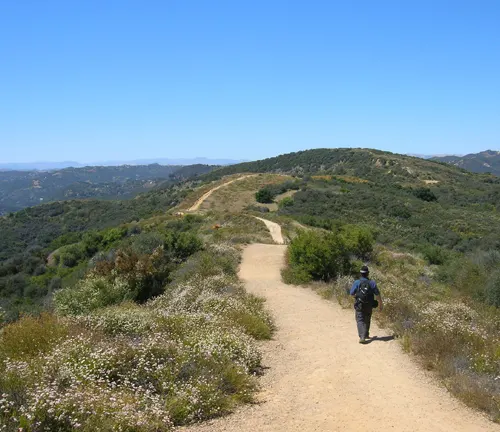

Different Facilities and Amenities in Topanga State Park
- Parking Areas: The park provides several parking areas for visitors. These are strategically located near major trailheads and attractions, offering easy access to the park’s key features. The parking areas are equipped to accommodate a significant number of vehicles, ensuring that visitors have a hassle-free start to their adventure.
- Visitor Center: The Topanga State Park Visitor Center serves as an informational hub for guests. Here, visitors can find maps, brochures, and detailed information about the park’s trails and wildlife. The center also often hosts exhibits and educational displays about the park’s ecology and history.
- Picnic Areas: Scattered throughout the park are various picnic areas, ideal for families and groups. These areas are equipped with tables and, in some cases, barbecue grills. They provide a perfect setting for a midday break to enjoy a meal surrounded by the park’s natural beauty.
- Restroom Facilities: For convenience, there are restroom facilities located near the main parking areas and visitor center. These are maintained regularly, ensuring cleanliness and accessibility for all park visitors.
- Interpretive Programs: Topanga State Park often offers interpretive programs, including guided hikes and educational talks. These programs are designed to enhance the understanding and appreciation of the park’s natural and cultural history.
- Hiking Trailheads: The park features several hiking trailheads that lead to its network of trails. Each trailhead provides different experiences, ranging from easy nature walks to challenging hikes, catering to all levels of hikers.
Tips and Advice for Visiting Topanga State Park
- Best Time to Visit: Visiting Topanga State Park can be a delightful experience year-round, but the best times are during spring and fall. These seasons offer mild weather, making outdoor activities more enjoyable. Early mornings and late afternoons are particularly magical due to the softer light and cooler temperatures.
- Parking Tips: Parking in the park can be limited, especially on weekends and holidays. Arriving early ensures a spot. Be mindful of parking fees and always park in designated areas to avoid fines and protect the park’s natural environment.
- Trail Selection: Topanga State Park offers a variety of trails, from easy walks to challenging hikes. Beginners may enjoy the Nature Trail for a gentle introduction, while experienced hikers might prefer the more strenuous Eagle Rock Trail. Research and choose trails that suit your fitness level and interests.
- Safety Precautions: Safety is paramount. Always stay on designated trails, be aware of your surroundings, and check the weather forecast before heading out. In case of emergencies, have a plan and let someone know your itinerary.
- Wildlife Guidelines: The park is home to diverse wildlife. Observe animals from a distance, do not feed them, and store food securely. Understanding how to interact with wildlife ensures both your safety and the well-being of the animals.
- What to Bring: Essentials include a map, a first-aid kit, a hat, sunscreen, and appropriate footwear. Also, consider bringing a camera to capture the park’s beauty.
- Staying Hydrated and Nourished: Bring plenty of water and snacks, especially if you plan to hike. Staying hydrated and energized is crucial for a comfortable and enjoyable visit.
- Leave No Trace Principles: Follow Leave No Trace principles by packing out all your trash, staying on trails, and not disturbing wildlife or plant life. Respecting these guidelines helps preserve the park for future visitors.
- Photography Etiquette: While capturing the beauty of the park, stay on trails to protect the environment, and be considerate of other visitors who may also want to take photos of the same scenes.
Recommendation
I strongly encourage a visit to Topanga State Park for an enchanting blend of natural beauty and historical charm. This park, renowned for its varied landscapes, striking rock formations, and myriad outdoor activities, offers a unique and immersive experience. Delve into peaceful activities such as hiking and wildlife watching, while contributing to the park’s conservation efforts. The scenic trails, historical richness, and collective preservation efforts make Topanga State Park an essential destination for those seeking a perfect balance of nature exploration and recreational enjoyment.
Conclusion
In conclusion, Topanga State Park stands as a magnificent testament to the beauty and diversity of nature, just a breath away from the urban sprawl of Los Angeles. This park is not merely a location but a vibrant, living canvas that blends historical richness with ecological diversity. Whether you’re a hiker, a nature enthusiast, or someone seeking a peaceful retreat, Topanga offers an array of experiences that resonate with the soul. Its trails whisper the stories of the past, and its landscapes offer a sanctuary for both wildlife and human spirits alike. As a beacon of natural splendor and tranquility, Topanga State Park truly encapsulates the essence of California’s wild heart.
FAQs
- What is the best time of year to visit Topanga State Park?
The park is beautiful year-round, but spring (March to May) is especially lovely with wildflowers in bloom. The weather is generally mild during these months, making it ideal for hiking and outdoor activities. - Are there any guided tours or educational programs offered at Topanga State Park?
Yes, the park occasionally offers guided hikes and educational programs. These are usually led by park rangers or local naturalists and provide in-depth knowledge about the park’s ecosystems and history. - Can I have a picnic at Topanga State Park?
Absolutely! There are designated picnic areas in the park where visitors can enjoy meals. However, it’s important to pack out all trash to keep the park clean and protect wildlife. - Is Topanga State Park wheelchair accessible?
While some areas of the park might be challenging due to natural terrain, there are accessible trails and facilities. Visitors are encouraged to check with the park office for the most accessible routes. - What should I do if I encounter wildlife in the park?
If you encounter wildlife, keep a safe distance, do not feed the animals, and observe them quietly. This ensures both your safety and the well-being of the wildlife. - Is it possible to volunteer at Topanga State Park?
Yes, the park often welcomes volunteers for various activities, including trail maintenance, habitat restoration, and educational programs. Interested individuals can contact the park office for more information. - Are group events or gatherings allowed in Topanga State Park?
Group events are allowed but may require a permit, especially for large gatherings. It’s best to contact the park in advance to arrange permits and get information on suitable locations within the park. - How can I stay updated on park conditions and events?
The best way to stay updated is to check the official California State Parks website or contact the park office directly. They provide the latest information on trail conditions, closures, and upcoming events.
As we leave the scenic trails and serene landscapes of Topanga State Park behind, we carry with us the memories of its natural splendor. This park serves as a reminder of nature’s timeless beauty, inviting us back to explore its wonders again. Until next time, Topanga State Park remains a cherished escape in the heart of the Santa Monica Mountains.


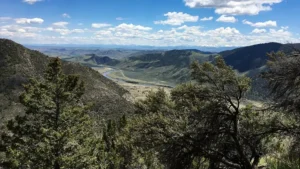

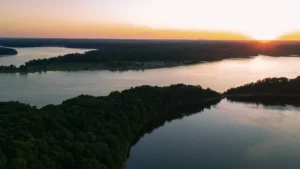
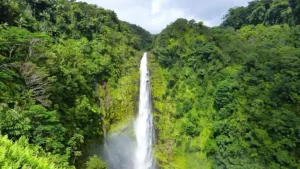


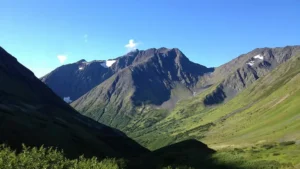


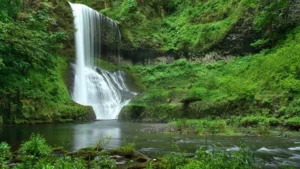
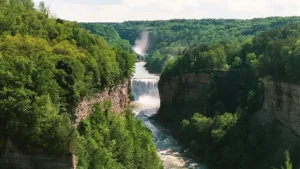

Leave your comment